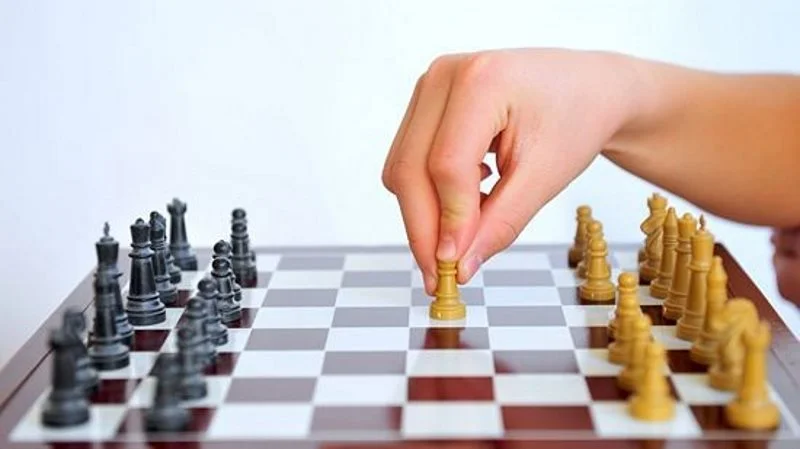
A good start to your game is the first step towards victory.
The first few moves of a chess game, known as the opening, are crucial. They lay the foundation for your entire strategy. For a beginner, it is not necessary to memorize dozens of complex lines. It is much more important to understand the fundamental principles that govern this phase of the game.
This guide will explain simply and clearly how to approach the opening to get off to a good start and avoid common mistakes.
What will you learn in this guide?
- The 3 golden rules of the opening that every beginner should know.
- Examples of simple and solid openings to play, like the Italian Game.
- The strategic ideas behind the first moves.
- Opening mistakes to avoid.
What is a chess opening?
The opening is the first phase of a chess game, comprising approximately the first 10 to 15 moves. The goal is not to checkmate immediately, but to:
- Develop your pieces: Get your pieces off their starting squares so they can participate in the game.
- Control the center: The central squares (d4, e4, d5, e5) are the most important because they offer the most mobility to the pieces.
- Keep your king safe: Usually by castling.
If you meet these three objectives, you will get a good position, regardless of the name of the opening you play.
The 3 Golden Rules of the Opening
1. Control the Center
Controlling the center is the most important principle. A piece in the center controls more squares and can move more easily from one side of the board to the other.
How to do it?
- Occupy the center with a pawn on the first move (for example, 1. e4 or 1. d4).
- Develop your knights and bishops so that they attack or defend the central squares.
1. e4 e5 is one of the most classic ways to fight for control of the center.
2. Develop Your Pieces
A piece on its starting square is useless. You need to develop your pieces (especially knights and bishops) as quickly as possible.
Development tips:
- Develop knights before bishops. Knights have fewer square options at the beginning.
- Try to move each piece only once in the opening.
- Don't bring your queen out too early. It is a powerful piece that can become a target for less important opposing pieces.
3. Keep the King Safe (Castling)
The king is your most important piece. Leaving it in the center of the board exposes it to attacks. Castling is a special move that allows you to shelter it behind a wall of pawns while developing a rook.
When to castle?
- Castle early in the game, usually before the 10th move.
- Kingside castling (short castle) is often safer than queenside castling (long castle).
A Simple and Effective Opening for Beginners: The Italian Game
The Italian Game (or Giuoco Piano) is one of the oldest and most reliable openings. It perfectly illustrates the principles we have just seen.
Here are the first moves:
1. e4 e5 Both players fight for the center.
2. Nf3 Nc6 White attacks the e5 pawn, Black defends it. Both players develop a knight.
3. Bc4 Bc5 White places their bishop on an active square where it controls the center and targets the weak f7 point. Black does the same by developing their own bishop.
Basic position of the Italian Game. Both sides have developed their pieces well.
Ideas for the future:
- For White: Prepare to castle short (0-0), play d3 to solidify the center, and continue development.
- For Black: Do the same. Play Nf6, castle, and prepare the move d6.
By playing this opening, you are almost certain to get a healthy and balanced position.
Another solid option: The Ruy López (Spanish Opening)
The Ruy López is another top-tier opening that starts similarly to the Italian.
1. e4 e5 2. Nf3 Nc6 3. Bb5
The key position of the Ruy López.
With 3. Bb5, White not only develops a piece, but also puts indirect pressure on the black knight on c6, which defends the e5 pawn. It is a slightly more strategic opening than the Italian, but it is based on the same sound principles.
Common Opening Mistakes to Avoid
- Bringing the Queen out too early: As mentioned, your queen will become a target and you will waste time moving it while your opponent develops their other pieces.
- Making too many pawn moves: Pawns are useful for controlling the center, but they cannot win the game on their own. Prioritize the development of your bishops and knights.
- Neglecting king safety: Not castling is one of the most serious mistakes a beginner can make. A king in the center is an easy target.
Conclusion: Play with Principles, not by Rote
As a beginner, your goal in the opening is not to trap your opponent or win in 10 moves. Your goal is to reach a playable position where all your pieces are active.
Remember the 3 golden rules:
- Control the center.
- Develop your pieces.
- Keep your king safe.
By following these tips and trying simple openings like the Italian Game, you will build a solid foundation for the rest of the game and significantly increase your chances of victory.